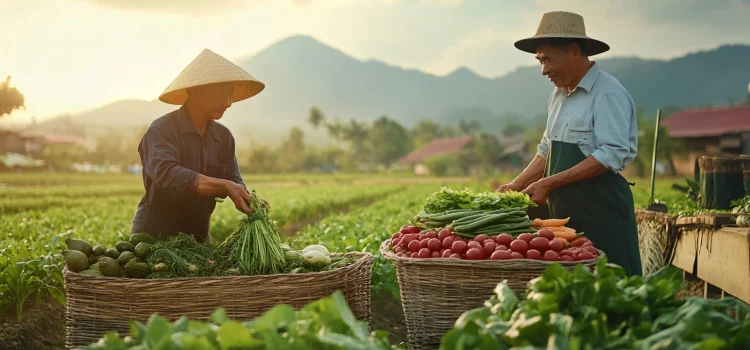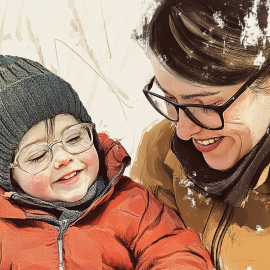

This article is an excerpt from the Shortform book guide to "The Rational Optimist" by Matt Ridley. Shortform has the world's best summaries and analyses of books you should be reading.
Like this article? Sign up for a free trial here.
What’s the history of trade in agriculture? What did trade offer in the world of agriculture?
Trade, according to Matt Ridley, provided the impetus for agriculture. As a result, agriculture became the cornerstone of settled civilization.
Below, we’ll explore how this happened over time and the importance of trade in agriculture.
How Trade Leads to Agriculture and Civilization
To understand the importance of trade in agriculture, you have to know how hard it was for people to continue being hunters and gatherers when they settled in civilizations. Before agriculture took root, humans were largely hunters and gatherers. This lifestyle didn’t require them to stay in a fixed place. But trading required a meeting place and often benefited from proximity to other communities and stability. Thus, humans began to live in larger, long-term communities near trading spots—the beginnings of cities and settled civilization.
(Shortform note: There is some evidence that some hunter-gatherer societies actually did live in settled communities before the adoption of agriculture. Sites such as those of the Natufian culture in the Levant, dating back to around 12000 to 9500 BCE, feature evidence of villages occupied year-round—suggesting a more rooted and sedentary lifestyle. Moreover, historical evidence suggests that engaging in trade doesn’t require a group to be sedentary. For example, Mongolian nomads were pivotal in facilitating trade across vast distances on the Silk Roads—trading routes that connected ancient China with Europe—leveraging their mobility to connect distant civilizations.)
Moreover, writes Ridley, these burgeoning communities required a steady food supply. Hunting and gathering was unpredictable and unable to meet the growing demand. This problem spurred our ancestors to develop agriculture. They discovered that they could grow plants and breed animals on a large scale. The steady, localized food supply created by farming was ideal for supporting the consistently populated trading communities.
This became a positive feedback loop as farming, in turn, accelerated trade. Once people began to grow crops or rear livestock, they produced more food than they could consume. The surplus could then be traded for other necessities and luxuries. This led not only to the growth of these early communities but also to increased specialization, as people began to focus more on producing specific goods for trade.
| Did Agriculture Increase the Food Supply? Some scholars have pushed back against the idea that agriculture actually increased the food supply for early societies. In Against the Grain, political scientist and anthropologist James C. Scott posits that the move to sedentary agricultural societies introduced challenges that were absent in hunter-gatherer societies. He writes that the reliance on fixed agriculture didn’t universally enhance human prosperity. Instead, it imposed a more labor-intensive, less diverse diet on populations compared to the varied and often abundant diets of hunter-gatherers. Further, he writes that the transition to agriculture, which often meant growing a single type of grain, such as wheat or corn, often led to nutritional deficiencies and increased vulnerability to crop failures. Reliance on mono-crop farming thus made early agricultural societies susceptible to disease and famine, in contrast to the more resilient and varied diets of hunter-gatherers. Scott highlights that hunter-gatherer societies had certain advantages over farming societies, such as mobility, which allowed for a more flexible response to environmental changes and resource availability. |

———End of Preview———
Like what you just read? Read the rest of the world's best book summary and analysis of Matt Ridley's "The Rational Optimist" at Shortform.
Here's what you'll find in our full The Rational Optimist summary:
- The connection between free trade and cultural evolution
- Why Matt Ridley defends the use of fossil fuels
- Why foreign aid can’t fix developing nations






